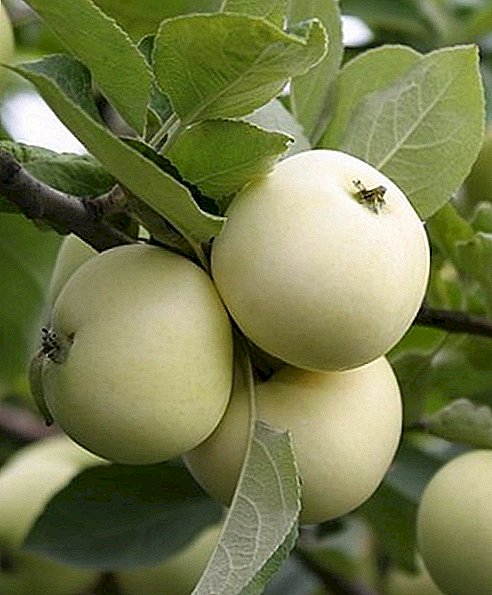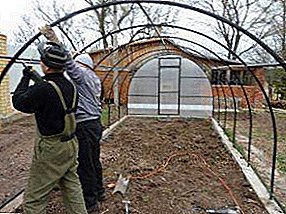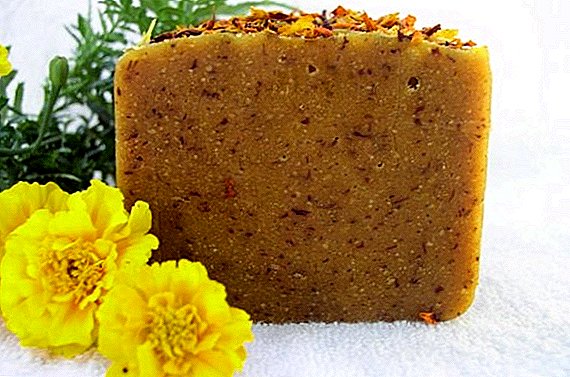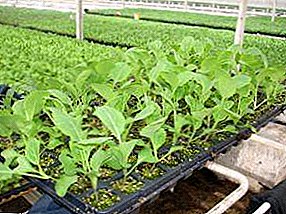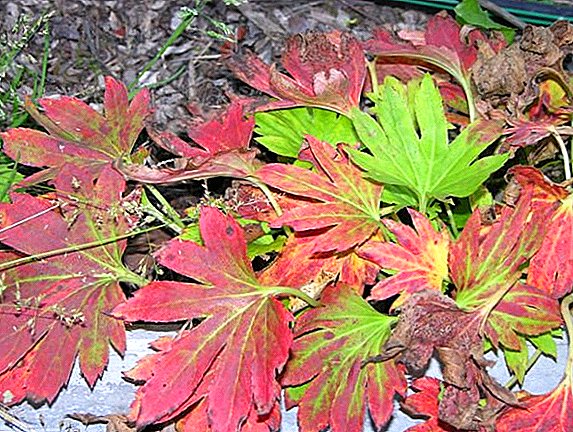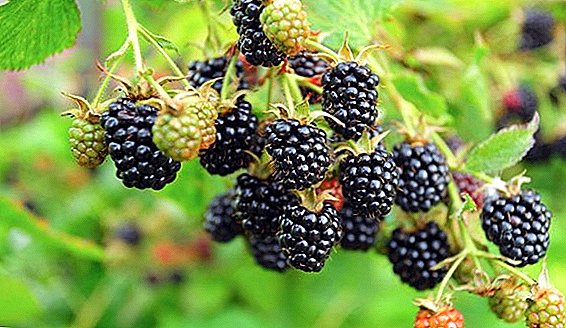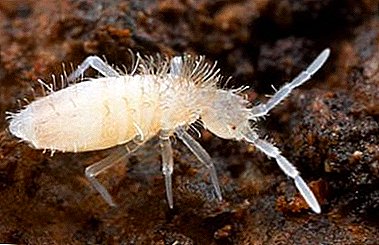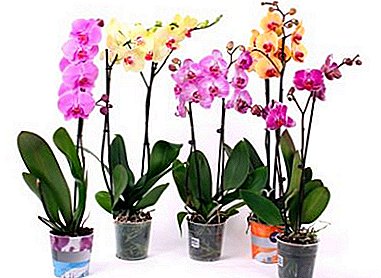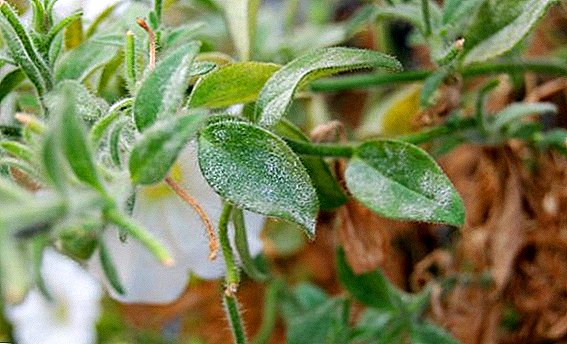 With the slightest mistake in the care, tender petunia begins to hurt. The first worst enemy of the flower is powdery mildew spores. The danger of this fungal disease lies in the initial weak signs - even when white bloom appears on the leaves, many growers mistakenly perceive it as dust. Due to lost time, the plant may die. What to do when powdery mildew appears on the petunias, what unmistakable signs of the disease and methods of its treatment exist - this will be discussed later.
With the slightest mistake in the care, tender petunia begins to hurt. The first worst enemy of the flower is powdery mildew spores. The danger of this fungal disease lies in the initial weak signs - even when white bloom appears on the leaves, many growers mistakenly perceive it as dust. Due to lost time, the plant may die. What to do when powdery mildew appears on the petunias, what unmistakable signs of the disease and methods of its treatment exist - this will be discussed later.
What is dangerous and where does it come from
Fungal mycelium, which are the causative agents of the disease, live in the soil and make themselves felt at the first favorable conditions for them. Often the factors contributing to the activation of these parasitic formations are cold rainy weather and poor care. 
Did you know? Petunia was first discovered by botanists in Uruguayan surroundings and credited to the genus Tobacco. Therefore, the flower was originally called Nicotiana axillaris.
According to experts, lead to the development of powdery mildew foci can:
- excessive amount of nitrogenous substances in the flower pot;
- lack of good ventilation of the plant, which is caused by too thick sowing (such specimens must be thinned);
- illiterate watering, when the florist allows the earthen coma to completely dry, and then pours it heavily with water, or, conversely, when moisturizes without waiting for the surface ball to dry out;
- adverse weather conditions, when air humidity reaches above 60%, at a temperature of 15-25 ° C (this cause of the disease applies only to street petunias);
- contaminated irrigation water;
- neighborhood with diseased plants or contact with hands that touched infected foci;
- radical rejuvenation of the bush;
- sudden changes in temperature;
- spread by the wind of fungal microorganisms.
Important! Infected petunias are disinfected by sprinkling with special preparations and watering. In the case of indoor plants, the sill is treated with a sill, a pot and a tray.
Signs of appearance
The disease begins to manifest white dusty bloom on young shoots and basal part of the plant, and over time captures it completely. First of all, leaves that are close to the soil are affected. In the initial stages of the fungal mycelium, small droplets of moisture are noticeable in this “dust”.  If you look closely, then on the leaf plates, where the mycelium was attached, you can see tiny ulcers, due to which the petunia every day more and more languishes. You need to act at the first symptoms of infection. Otherwise, the culture will decrease immunity and rot will develop.
If you look closely, then on the leaf plates, where the mycelium was attached, you can see tiny ulcers, due to which the petunia every day more and more languishes. You need to act at the first symptoms of infection. Otherwise, the culture will decrease immunity and rot will develop.
Powdery mildew also suffers from indoor (violets, orchids, Kalanchoe) and garden flowers (roses, hydrangeas, asters, phloxes).
Prevention and agrotechnical rules
In order not to contemplate the white bloom on the leaves of petunia and break your head than to treat it, you can get rid of fungi and bacteria resistant hybrids. But if you contain them with gross violations of the rules of cultivation, even genetic immunity will not save.
Important! When found on the leaves of petunia, the mycelium powdery mildew stops the flower from spraying and feeding with nitrogen. It is carried away from other flowers on a sunny site.
Therefore, provide a plant competent care:
- Make a rule: water the flower only after the top layer of the substrate dries out. Water for moistening should settle and warm up to room temperature.
- Periodically thin out the group plantings and each time remove the dead and in contact with the ground leaves.
- Do not overdo it with nitrogen during fertilizing, this moment is especially important during the formation of peduncles.
- Do not neglect the potassium-phosphate mixtures, which experts recommend for the development of the immune functions of the flower.
- Inspect the stems and leaves weekly, paying particular attention to the root part.
- Periodically disinfect the plant with biofungicides.

Methods of struggle against the "scourge"
When it is too late to carry out preventive measures and there are obvious signs of illness on the flower, proceed immediately to treatment. The first thing to do in such a situation is to isolate the petunia container from the healthy neighbors. Cut off all the affected areas, even if they have not yet had time to open buds. These residues will need to be burned in order not to spread the infection in the garden.
Important! Small petunias, which are attacked by powdery mildew, are completely dipped into the treatment solution. Thus, both land and green mass are disinfected.
If we are talking about a room flower, then it must be transplanted into a fresh substrate. A ground around the garden petunias sprinkled with a 2-cm layer of wood ash. Further disinfection depends on the degree of infection and your preferences. You can use folk remedies to combat powdery mildew or agrochemical inventions.
Mealy dew infects orchards (currants, gooseberries, grapes, peaches, apples, cherries) and garden crops (cucumbers, tomatoes, cabbage, carrots, zucchini, melons).
Folk recipes
Experienced growers are advised to resort to these funds for the purpose of prevention and in the initial stages of infection. The desired effect will be possible if fungal mycelium attacks your green darling for no more than 4 days. Otherwise, all efforts will be in vain.
If you have time with the deadlines, try to prepare an "explosive mixture" of wood ash. To do this, you will need only 200 g of the product, 5 liters of water heated to 40 ° C, and 30 g of liquid soap. Mix everything well, let it sit a little. Sprinkle with a two-day interval and carefully observe the condition of the plant. In addition, add another 5 liters of water to the remaining solution and pour over the well.
Did you know? The asteroid, which was discovered in 1921, is named after the flower.
An alternative solution is iodine solution, which is prepared in a ratio of 1 ml / 1 l. Soda ash also has an overwhelming effect. 10 g of powder per 2 liters of hot water and 1 teaspoon of liquid soap is enough for treating the culture three times with a weekly interval.  Garlic or onion peels in tandem with hot water and iodine give good results. The only drawback of this method is the need to insist the solution for 48 hours. When the tool is ready, the plant will need more powerful drugs.
Garlic or onion peels in tandem with hot water and iodine give good results. The only drawback of this method is the need to insist the solution for 48 hours. When the tool is ready, the plant will need more powerful drugs.
To prevent the spread and activation of fungal mycelium is quite possible with a solution of potassium permanganate (potassium permanganate), milk and whey. In the reviews, growers note the high effectiveness of the above methods and even compare them with known fungicides. For example, they write that the drugs "Phenarimol" and "Benomil" lose in effectiveness with milk diluted with water in a ratio of 1:10.
Did you know? Foreign farmers who specialize in environmentally friendly products prefer dairy products to deal with powdery mildew.
Drugs
If the disease progresses for about a week, it will be necessary to save petunia with strong chemical or biological preparations.  Of the many developments of agrochemistry, impeccable reputation among such:
Of the many developments of agrochemistry, impeccable reputation among such:
- Copper sulfate. The working solution is prepared in a ratio of 50 g per 10 l of water. Spraying is recommended to be carried out only once a season, therefore it is better to do this with a preventive purpose in the spring.
- Sulfur colloid. It is enough to dissolve 30-50 g in a 10-liter bucket of water. But the air temperature during processing should not be below 20 ° C, otherwise the fungus will not be destroyed. In the heat, when the thermometer rises above 32 ° C, it is better to refuse sprinkling.
- "Topaz". For the purpose of treatment, the solution is disinfected in the proportion of 2 ml per 10 l of water. Sprinkling is repeated after 3 days. Only 3 treatments are allowed, but often the flower recovers after the first time. In case of prophylaxis, re-disinfection is recommended after 12 days.
- "Fundazol". It is a very effective chemical agent, but, unfortunately, it is sold for sale only in large packages (5–20 kg each). The solution is prepared in a proportion of 10 g per 10 l. Allowed 2 sprinkling.
Did you know? Petunia entered the landscape gardening design in triumph in 1834, when its first hybrid bloomed.
Among the biological fungicides are leading "Fitosporin", "Alirin-B", "Pseudobacterin". These substances are more suitable for preventive spraying of petunias than for treatment. In any case, the flower must be disinfected generously, so that the pesticide gets into all parts of the plant and into the soil as well.
Now you know how insid mealy dew and how to deal with it. Of course, it is always easier to prevent a disease than to cure it.



